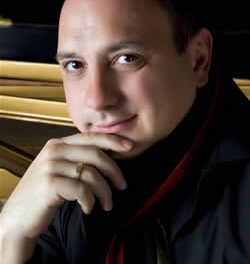The Eastern Music Festival student orchestra performed a wildly colorful concert under the direction of Jose-Luis Novo. The concert began and ended with rousing orchestral works, in magnificent orchestrations, ranging in dynamics from the softest mandolin serenade to raucous sounds of crowds and animals in the time of the Roman gladiators.
The jewel of the concert, however, was the sublime and beautifully played Violin Concerto in E minor, Op. 64, by Felix Mendelssohn, premiered in 1844 by Ferdinand David, six years after it was first promised to him. The concerto has remained at the pinnacle of the repertory ever since. With its early entrance of the solo violin, the omission of the orchestral exposition of the themes, the written out cadenza and the linking together of the movements without significant pauses, this familiar concerto is replete with innovations.
Soloist Ani Kavafian is a world-class violinist of the highest quality. She has a beautiful tone and is admired for the charm and subtlety of her interpretations. Unfortunately, this performance was accompanied by a huge string section which overwhelmed Ms. Kavafian’s attempts at subtlety; indeed, she drowned in the swells of the orchestral strings in most of the accompanied passages! The best moments came when she played alone, as in the cadenza, and when the only accompaniment was in the woodwinds, such as the excellent moments of the Finale with clarinets and flutes. Allowing all the strings of the student orchestra to play may have been a treat for them, but robbed the concerto of much of its refinement.
Most of Mexican composer Sylvestre Revueltas’ reputation as an innovative and original composer is based on the often-played Sensemayá. So it was a pleasure to hear the less often played Janitzio, which opened the concert with a bang. A bawdy waltz, filled with crowd noises and intentional wrong notes comprises the opening and closing sections, and a kinder gentler interlude gives welcome relief in this 12-minute musical description of a touristic island situated in the middle of a large dirty lake in the Mexican province of Michoacán. The young performers clearly enjoyed playing this work, which would be a perfect concert opener on any other program, but which eclipsed the delicate concerto which followed it.
After intermission, we were treated to the less frequently played of Ottorino Respighi’s popular trilogy on Roman themes, Feste Romane (Roman Festivals), Symphonic Poem, P. 157 (The other two are Pines of Rome and Fountains of Rome.). Feste Romane celebrates great Roman holidays of the past, starting with ancient Rome and ending with the present. Respighi is known for the brilliance and originality of his orchestration, which he studied with the Russian master of orchestration, Rimsky-Korsakoff, during the time young Respighi played principal viola in the St. Petersburg opera.
The work is colorful and passionate and the students were brilliant performers, from the start of the Games at the Circus Maximus to the raucous end of the Befana, the Roman outdoor celebration of Epiphany, the 12th night of Christmas. The middle movements moved through celebrations of Middle Ages’ pilgrimages to the Holy City, and a wild October Fest, ending with the mandolin serenade, well played on an Appalachian version of the Italian instrument by violist Chris Lowry (19, from Antioch, TN). Special mention must go to the excellent brass of the EMF orchestra: trumpets in the balcony, horns on stage and a splendidly drunk trombone solo. The rafters shook more than once in this work, which drew thunderous applause from a large and appreciative audience.












